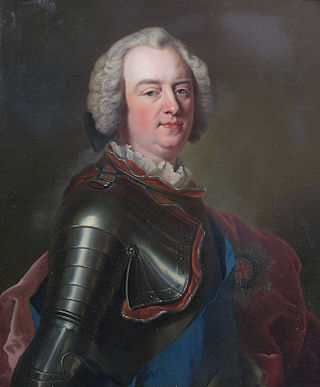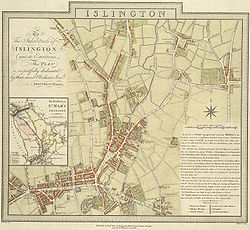
Thomas Lord was an English professional cricketer who played first-class cricket from 1787 to 1802. He made a brief comeback, playing in one further match in 1815. Overall, Lord made 90 known appearances in first-class cricket. He was mostly associated with Middlesex and with Marylebone Cricket Club (MCC) as a ground staff bowler.

It has been suggested that the origin of cricket can be traced back to Flemish emigrants residing in the south of England since the medieval period. The game was first played in the sheep-rearing country of the south-east, where the short grass of the fields made it possible to bowl a ball of wool at a target. That target was usually the wicket-gate of the sheep pasture, which was defended with a bat in the form of a shepherd’s crooked staff.
In the years from 1726 to 1750, cricket became an established sport in London and the south-eastern counties of England. In 1726, it was already a thriving sport in the south east and, though limited by the constraints of travel at the time, it was slowly gaining adherents in other parts of England, its growth accelerating with references being found in many counties. Having been essentially a rural pastime for well over a century, cricket became a focus for wealthy patrons and gamblers whose interests funded its growth throughout the 18th century.
The original London Cricket Club was formed in 1722 and was one of the foremost clubs in English cricket over the next four decades, holding important match status. It is closely associated with the Artillery Ground, where it played most of its home matches.

The 1744 cricket season in England is remembered for the earliest known codification of the Laws of Cricket. This was drafted by members of several cricket clubs, though the code was not published until 1755. Much of its terminology such as no ball, over, toss, umpire and wicket remain in current use. The season is also notable for the two earliest known surviving match scorecards. The second of those matches, played on Monday, 18 June, was a celebrated event in which a Kent county team challenged an England team at the Artillery Ground, Kent winning by one wicket.
Edwin Stead was a noted patron of English cricket, particularly of Kent teams in the 1720s. He usually captained his teams but nothing is known about his ability as a player. He was born at Harrietsham in Kent and died in London.

The White Conduit Club (WCC) was a cricket club based on the northern fringes of London that existed from about 1782 until 1788. Although short-lived, it had considerable significance in the history of the game, as its members created the first Lord's venue and reorganised themselves as the new Marylebone Cricket Club (MCC).
William Sawyer was an English cricketer who played during the 1730s and 1740s. He was mainly associated with Richmond and Surrey. Although information about his career is limited by a lack of surviving data, he is known to have made two single wicket and four other appearances between 1736 and 1747. He spent his whole life in Richmond and was an innkeeper there.
A variety of Kent county cricket teams played matches from the early 18th century until the formation of the original county club in 1842. The county's links to cricket go back further with Kent and Sussex generally accepted as the birthplace of the sport. It is widely believed that cricket was first played by children living on the Weald in Saxon or Norman times. The world's earliest known organised match was held in Kent c.1611 and the county has always been at the forefront of cricket's development through the growth of village cricket in the 17th century to representative matches in the 18th. A Kent team took part in the earliest known inter-county match, which was played on Dartford Brent in 1709.
County cricket teams representing Middlesex have been traced back to the 18th century, although for long periods the county was secondary to the London Cricket Club which played at the Artillery Ground. Middlesex teams played at various grounds throughout what is now the Greater London area. Islington and Uxbridge were often used but home matches were also played on Kennington Common and in Berkshire. Middlesex teams were less frequent in the 19th century until 1859 when the Walker family of Southgate became involved in county cricket.
The 1743 English cricket season was the 47th cricket season since the earliest recorded eleven-a-side match was played. Details have survived of 18 eleven-a-side and three single wicket matches.
In the 1773 English cricket season, there was a downturn in the fortunes of the Hambledon Club as their Hampshire team lost every match they are known to have played, and some of their defeats were heavy. Their poor results owed much to star bowler Thomas Brett having been injured. Three other county teams were active: Kent, Middlesex and Surrey. Teams called England took part in five matches, all against Hampshire, and won all five.

The 1787 cricket season in England is noteworthy for the foundation of Marylebone Cricket Club (MCC) after the opening of Thomas Lord's first ground in the parish of Marylebone, north of London. MCC soon became the sport's governing body with the new ground as its feature venue. The first match known to have been played at Lord's was on Monday, 21 May, between the White Conduit Club and a Middlesex county team. The first match known to involve a team representing MCC was against White Conduit on Monday, 30 July. Including these two, reports and/or match scorecards have survived of numerous eleven-a-side matches played in 1787. Eleven are retrospectively, but unofficially, recognised as first-class.
Lamb's Conduit Field, also known as Lamb's Conduit Fields was an open area in what is now the London Borough of Camden. The fields lay north of the Lamb's Conduit water feature that gave it its name, and lay mostly in the parish of St Pancras. It was a noted cricket venue in the first half of the 18th century.

Richmond Cricket Club was based in Richmond and was a leading club during the 18th century. Its home venue was at Richmond Green. It ceased to exist sometime after 1805. The current Richmond club, which plays in the Middlesex County Cricket League, was founded in 1862.

The earliest definite mention of cricket is dated Monday, 17 January 1597. The reference is in the records of a legal case at Guildford re the use of a parcel of land c.1550 and John Derrick, a coroner, testified that he had at that time played cricket on the land when he was a boy. Cricket may have been a children's game in the 16th century but, about 1610, the earliest known organised match was played and references from that time indicate adult participation. From then to 1725, less than thirty matches are known to have been organised between recognised teams. Similarly, a limited number of players, teams and venues of the period have been recorded.
Representing Kingston upon Thames in Surrey, the original Kingston Cricket Club was prominent in the 18th century, taking part in known matches from 1720 to 1767. According to surviving records, it had no specific venue and is known to have played at both Kennington Common and Moulsey Hurst. Kingston teams are recorded, either individually or jointly with other clubs, in eleven known major matches.
Chatham Cricket Club was founded by 1705 in Chatham, Kent, England. The first reference to its team is a match against West of Kent in August 1705. There is a specific reference to a "Chatham Club" in a description of a single wicket match in 1754.
Representing Brentford, now in Greater London and then in Middlesex, the original Brentford Cricket Club was prominent in the 18th century, taking part in matches from 1730 to 1799. According to surviving records, it had no specific venue and is known to have played at Brentford Court Green, Kew Green, Richmond Green and Walworth Common. Brentford teams are recorded, either individually or jointly with other clubs, in at least twelve matches.
In English cricket, the years from 1751 to 1775 are notable for the rise of the Hambledon Club and the continuing spread of the sport across England. The Laws of Cricket underwent a re-codification in 1775, including the introduction of the leg before wicket rule and the addition of the third stump to the wicket.






